The Friends held their Annual General Meeting at All Saints’ church, Ulcombe on Saturday 11 May 2024. This was preceded by a visit to St Peter & St Paul, East Sutton. Both churches lie on the Chart Hills, south-east of Maidstone. About 45 members were present. We had tea at Ulcombe church.
St Peter & St Paul, East Sutton lies next to Sutton Park, for centuries the main home of the Filmer family, whose monuments crowd the church interior. The Filmers are long gone, however, and the house has for many years served as part of an open prison. The church is built of ragstone, unsurprisingly given that the Boughton Monchelsea quarries which are the main source of the stone are so close. It is a 14th century building with extensive 15th century embellishments, including south chapel, porch and tower. The north chapel is one of the best places in Kent to see the inventive and intricate tracery which was popular in Kent in the early 14th century: moreover, it is unrestored.
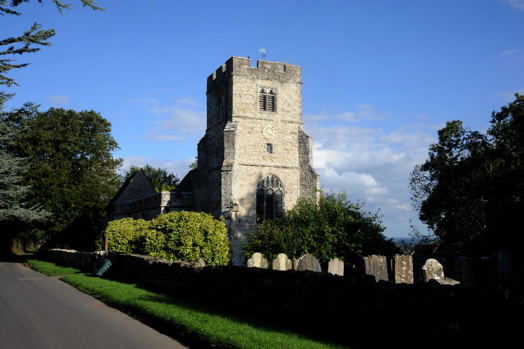
East Sutton: exterior from the west
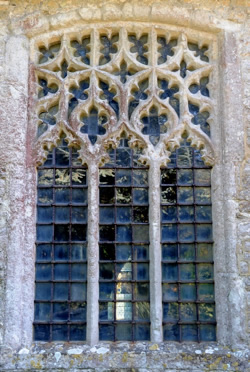
East Sutton: window tracery in north chapel
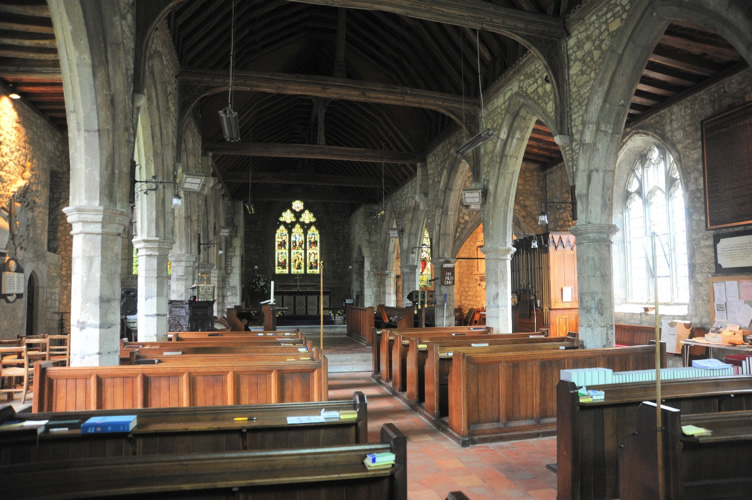
East Sutton: interior looking east
Within, the first impression is rather negative because the whole interior has been scraped ie lost its plaster rendering, no doubt at some point in the later 19th century when the aesthetically and historically misguided practice of stripping off plaster to reveal the natural stone was popular. No medieval church was intended to look like this. The nave and chapel arcades are all of the early 14th century and, to judge from the variations in detail, were not built in one campaign but piecemeal. The enrichment of the north chapel east wall is the architectural highpoint of the interior. The nave has a good crown-post roof.
The best of the furnishings are the hexagonal 13th century font, the medieval south door, a 17th century pulpit, a miscellany of medieval fragments of stained glass in a south window and a nice east window by Lavers and Westlake.
There is a host of monuments to the Filmer family, of which the enormous engraved brass plate to Sir Edward Filmer, who died in 1629, signed by Edward Marshall, is the best. The monument at the west end of the nave south aisle to the Reverend Sir John Filmer, who died in 1834, is by Ternouth in his best Grecian manner: for those who prefer some sentiment rather than such cool classicism, don’t miss the monument to Edmund Filmer, a sleeping baby, in the south chapel.
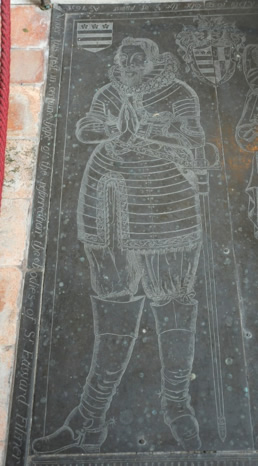
Part of brass to Sir Edward Filmer
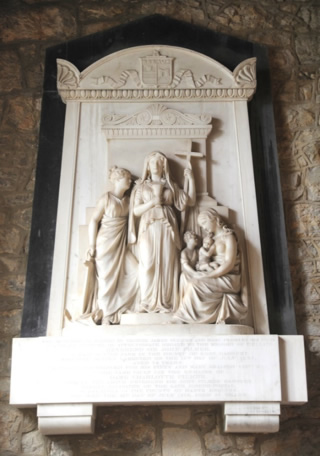
Monument to Revd Sir John Filmer
All Saints, Ulcombe is beautifully placed on the scarp above the Weald and there are very good views from the churchyard. It is largely a 12th and 13th century building, again of ragstone, which was once collegiate and accordingly has a large and fine chancel.
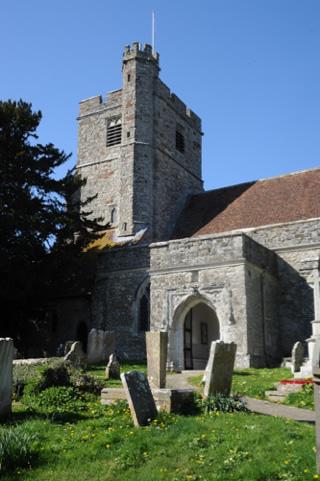
Ulcombe: tower & porch

Ulcombe: interior looking east
The nave must be Norman, to judge by the two blocked windows over the north arcade. The late 12th century south arcade to the south chapel suggests a Norman chancel of significant length too. In the early 13th century the nave south aisle, with its square piers and north chapel were added and the chancel rebuilt to accommodate the college of priests founded in 1220. Late medieval additions are the tower, porch and the eastern extension of the north chapel. The Decorated tracery of some of the windows at the east end of the church is worth examination.
The interior of the church must have been whitened when the chancel was reordered by Colin Shewring in 1960. The effect is to unify and lighten the building. The uncluttered chancel is a noble space, slightly spoiled by the suspended projection screen in the chancel arch which cuts across the east lancets when viewed from the nave.
The fittings are slightly meagre: the 14th century parclose screen between chancel and south chapel, together with the stalls and misericords associated with it are rather fine, as is the equivalent 15th or 16th century screen on the north side of the chancel. And there is a medieval door. But that is all.
The wall paintings on the piers and soffits of the nave and south chapel arcades, on the other hand, are well worth a close look. It is rare for so much to survive in a Kent church.
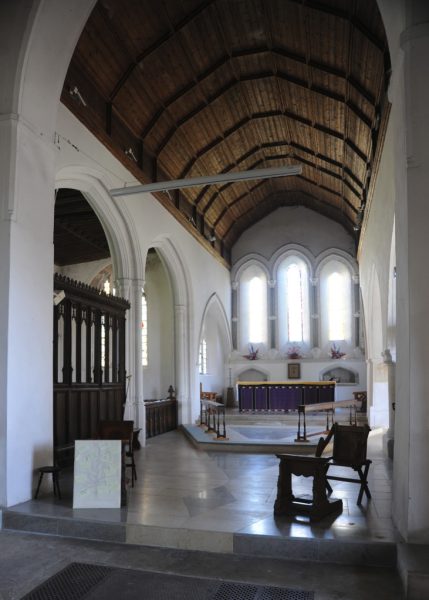
Ulcombe: chancel interior looking east
There are two fine brasses and also a large number wall monuments. The brasses commemorate William Maydestone +1419 and Ralph Sentleger+1470 and his lady: Ralph’s fantastic armour and the lady’s magnificent butterfly headdress are especially notable. The wall monuments include two to Marquesses of Ormonde: what, one wonders, are they doing here?
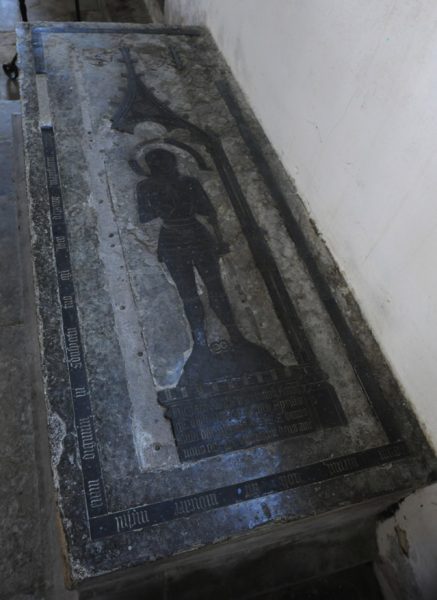
Brass to William Maydestone
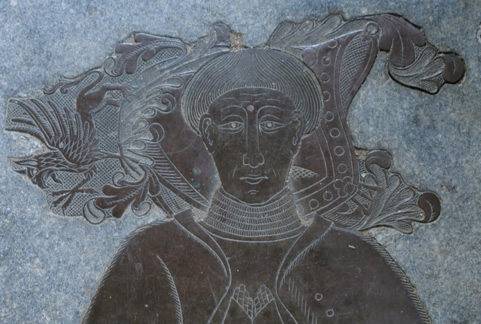
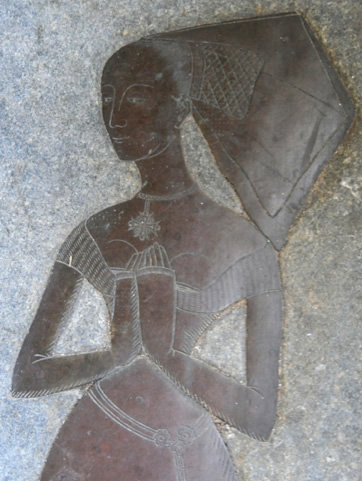
Details of the brasses to Ralph Sentleger and his lady

